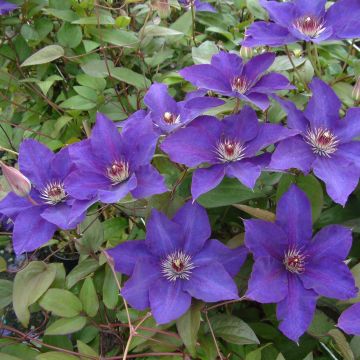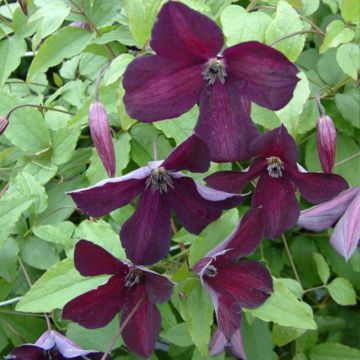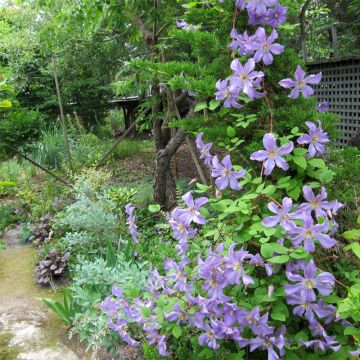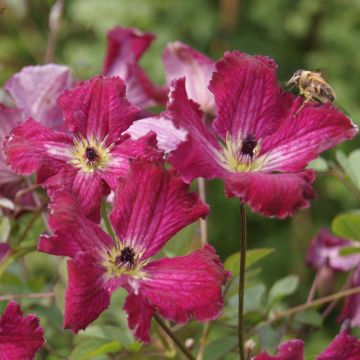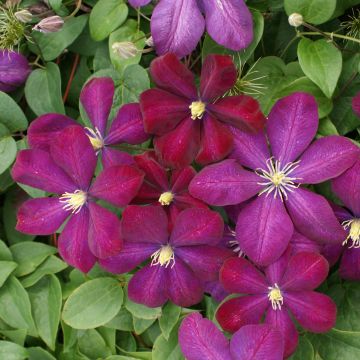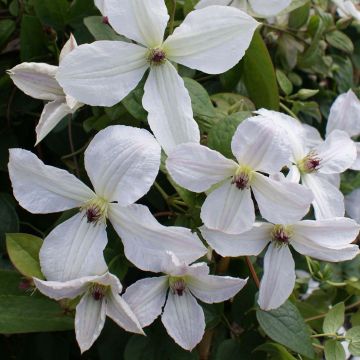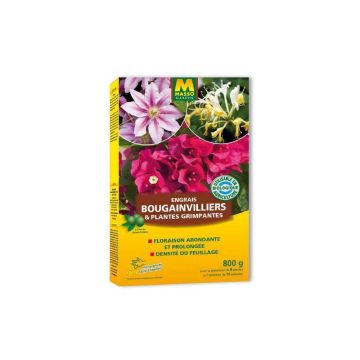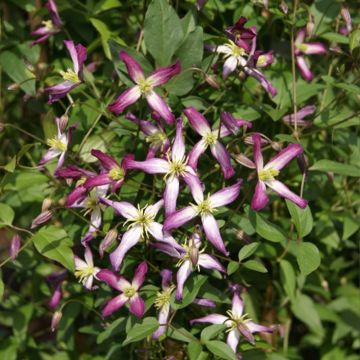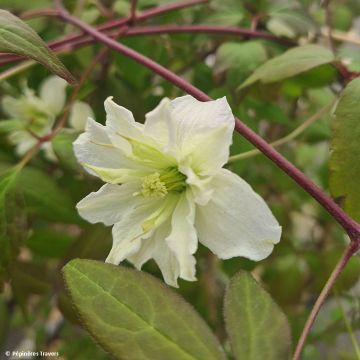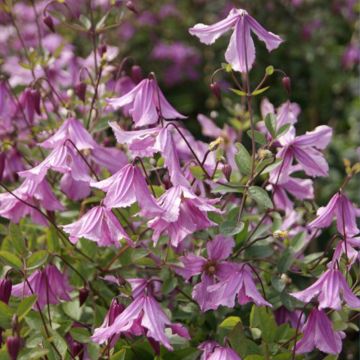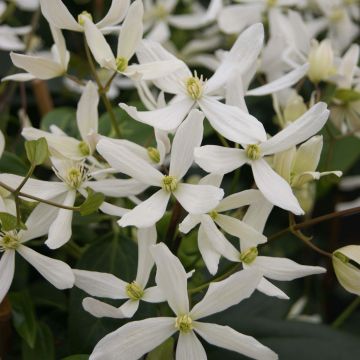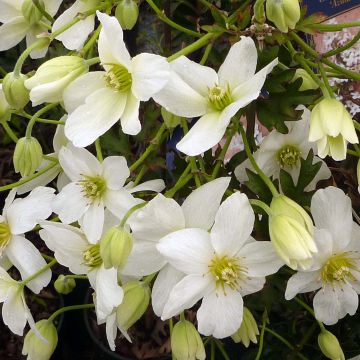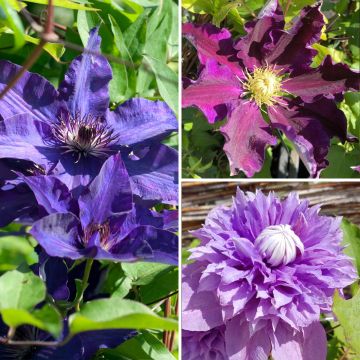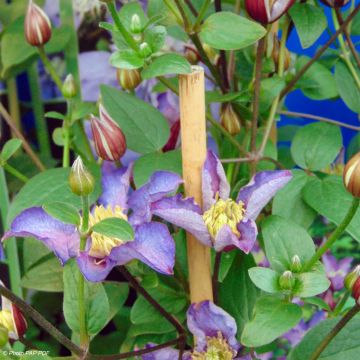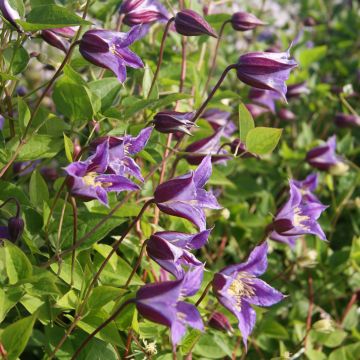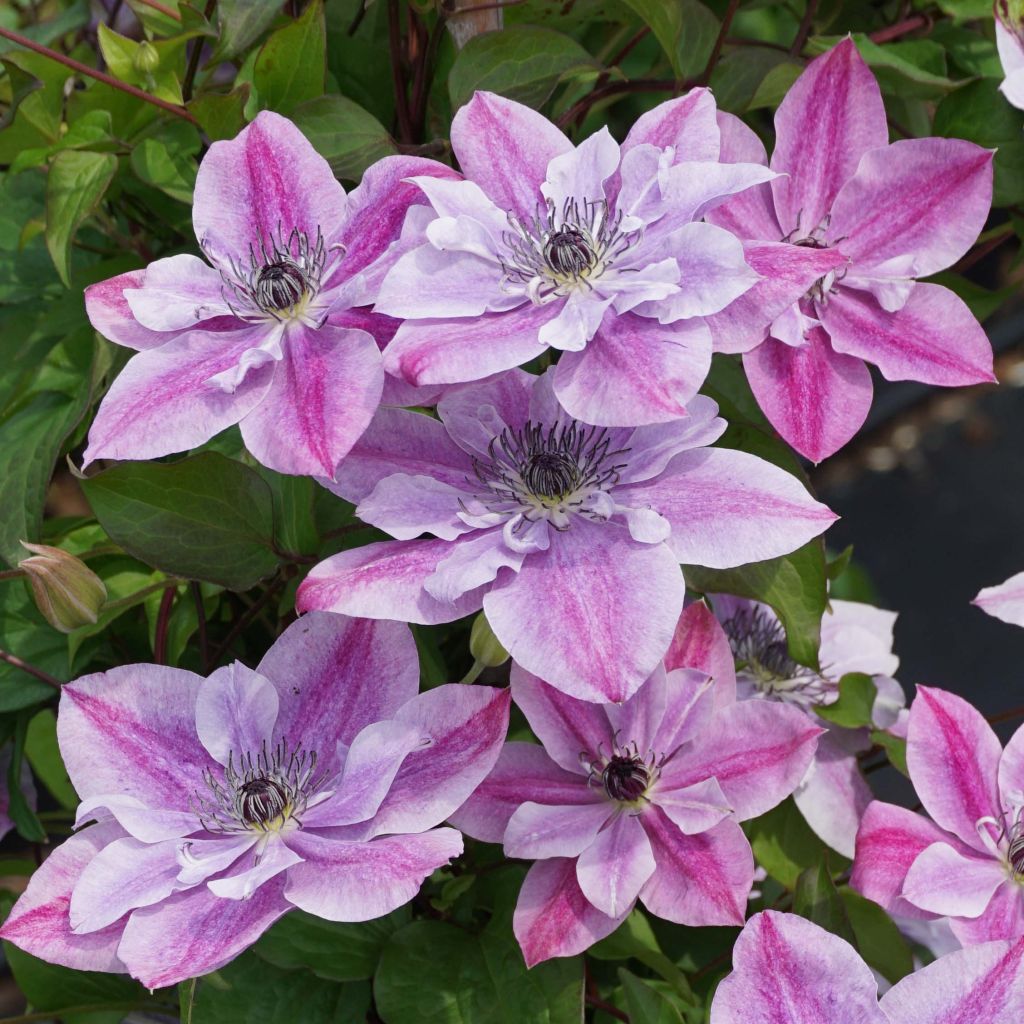

Clematis Super Cute
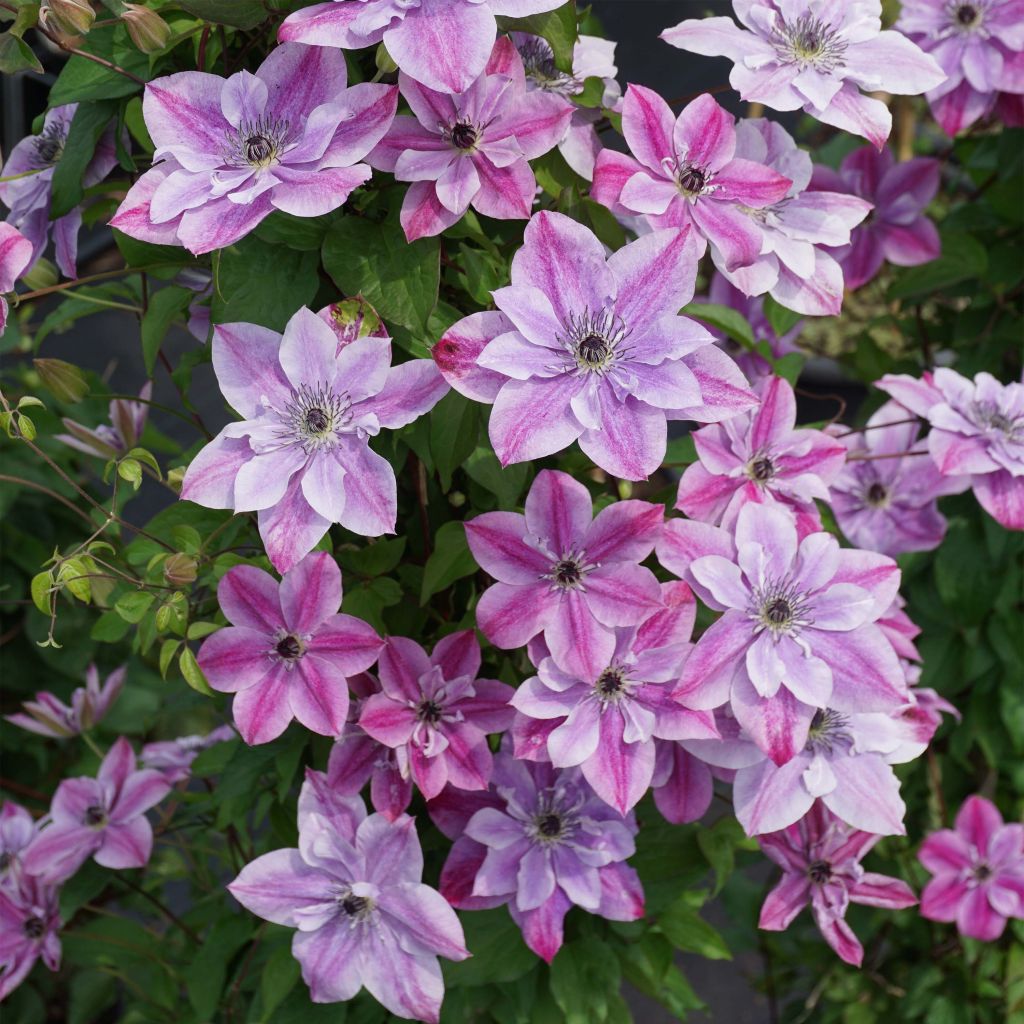

Clematis Super Cute
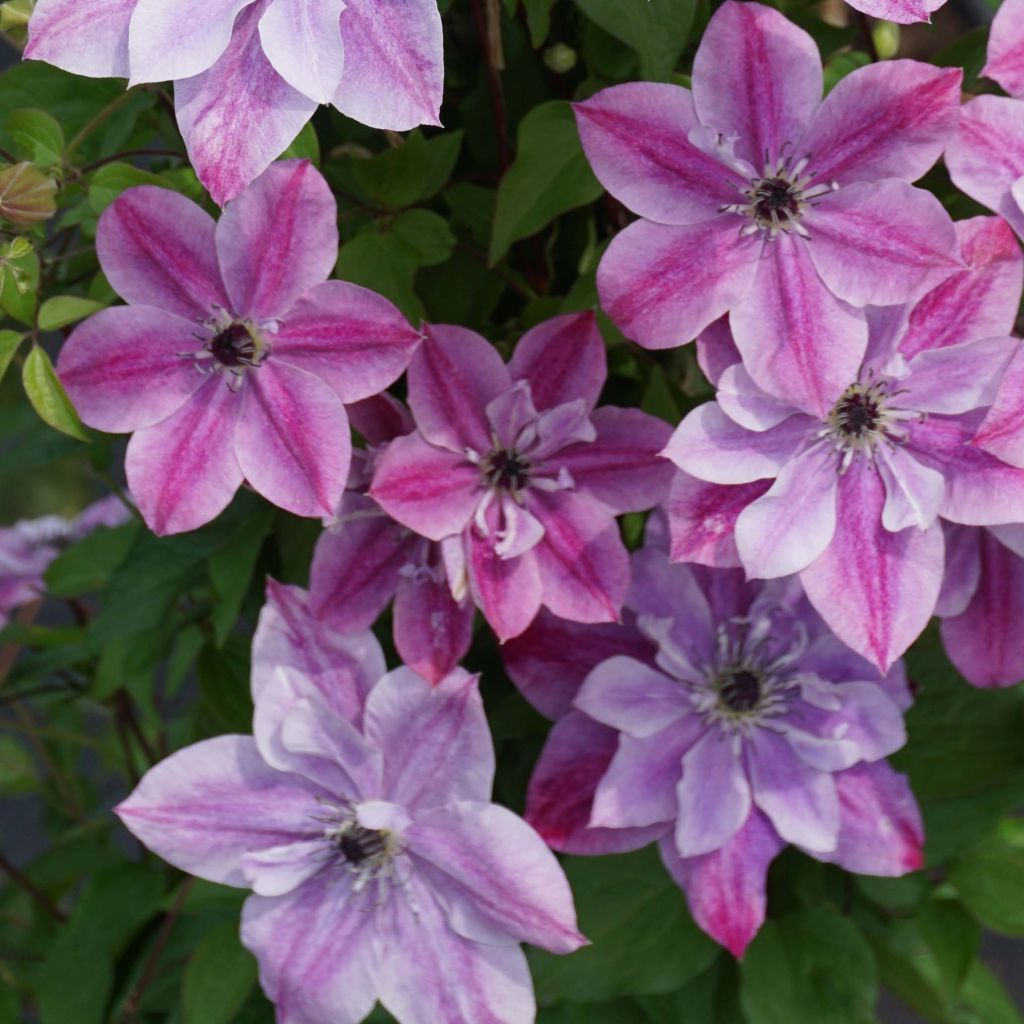

Clematis Super Cute
Clematis Super Cute
Clematis x viticella Super Cute (Zo09122)
Italian Leather Flower, Purple Clematis, Virgin's Bower
This item cannot be shipped to the selected country
Delivery charge from €5.90
More information
Schedule delivery date,
and select date in basket
This plant carries a 6 months recovery warranty
More information
We guarantee the quality of our plants for a full growing cycle, and will replace at our expense any plant that fails to recover under normal climatic and planting conditions.
From €5.90 for pickup delivery and €6.90 for home delivery
Express home delivery from €8.90.
Does this plant fit my garden?
Set up your Plantfit profile →
Description
Clematis 'Super Cute' is a charming new hybrid variety that has inherited the robustness of clematis viticella. The flowers of 'Super Cute' are medium-sized, semi-double when flowering begins, then single. They bloom abundantly throughout the summer, creating a lovely range of pink and mauve hues on this small climber. This moderately growing variety is particularly suitable for small gardens and container gardening. It is undemanding and thrives in full sun or partial shade in well-drained ordinary garden soil. Cut back to 25 cm (10in) above ground in March.
Clematis belongs to the Ranunculaceae family. They are found in Europe, the Himalayas, China, Australia and North and Central America. The 'Super Cute' variety was introduced in 2018 at the Plantarium in Boskoop by the Dutch specialist in the genus, J. van Zoest B.V. It is descended from Clematis viticella, native to Southern Europe, known for its natural resistance to clematis wilt. It is a perennial, semi-woody, climbing herbaceous plant that reaches about 3 m (10ft) high with a minimum spread of 1 m (3ft). This clematis bears well-opened flowers, 6 to 8 cm (2 to 3in) in diameter on the current year's growth, in successive waves from June to the end of summer. The flowers are solitary or grouped in small clusters. They have 6 to 8 broad, slightly overlapping, crinkled tepals, and sometimes a few additional small petals in the centre. Their base colour is a slightly mauve pink, with shades of mauve and often a darker mauve central zone. The centre of the flower has a beautiful crown of dark stamens. The smooth leaves are divided into 3 elliptical to lanceolate, fairly dark olive-green leaflets. The foliage dries up in winter. This clematis attaches itself to supports or host plants using petioles transformed into tendrils.
Plant clematis alongside your climbing or rambling roses ('New Dawn', 'Pomponella', 'Bouquet Parfait'), to extend the flowering season on your walls and pergolas until the end of summer. It is a diverse genus, with clematis available in all colours, shapes, and sizes. Take advantage of their easy cultivation to give your garden a romantic and bohemian touch. Let them weave their way through bushes or bamboo. 'Super Cute' will also pair well with the white or pink flowers of other small clematis 'Patricia Ann Fretwell' or 'Little Mermaid', for example, to climb a fence or cover a wall exposed to the morning sun. It will also look beautiful next to a small blue-flowering clematis, such as 'Rooguchi'.
Tips: Avoid excessive fertiliser as it can stimulate foliage growth at the expense of flowers. Do not mulch to prevent excessive moisture.
Report an error about the product description
Clematis Super Cute in pictures
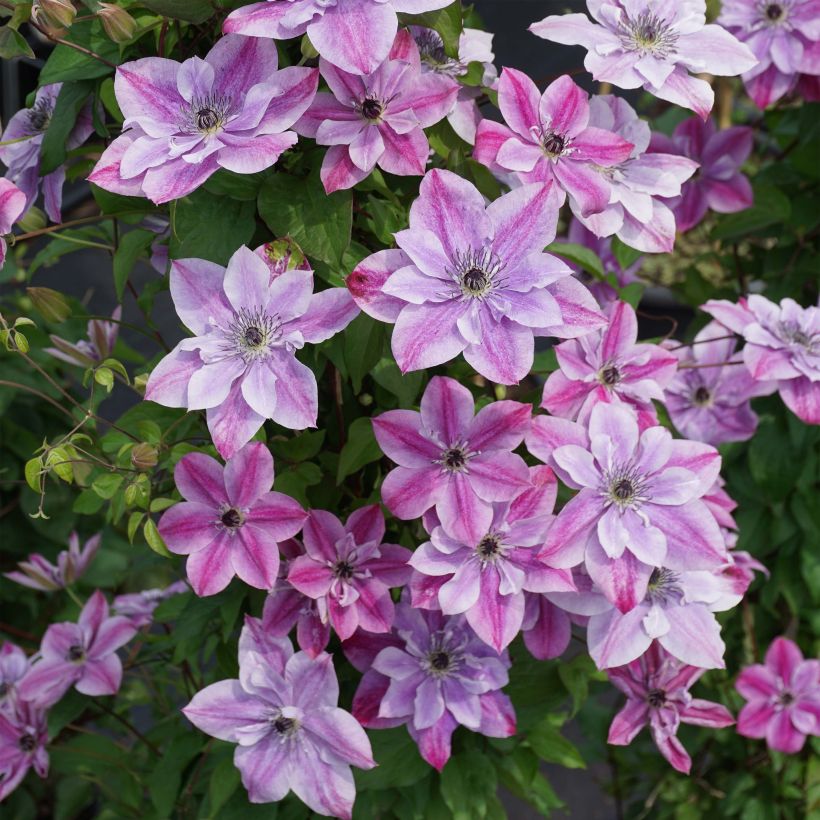

Plant habit
Flowering
Foliage
Botanical data
Clematis
x viticella
Super Cute (Zo09122)
Ranunculaceae
Italian Leather Flower, Purple Clematis, Virgin's Bower
Cultivar or hybrid
Other Clematis Viticella
Planting and care
Clematis 'Super Cute' prefers sunny but not scorching, or semi-shaded situations that prevent its flowers from fading too quickly. It even flowers in bright shade, especially in the sunniest regions. Plant it in fertile, humus-rich, well-drained soil, shading the roots and base of the stem (with a flat tile, for example). Clematis can wilt in excessively damp soil, but varieties with C.viticella genes seem more resistant to this disease. It also tolerates heat and dry soil better in summer. Plant it at an angle, covering the root ball with 3 cm (1in) of soil, in well-worked soil, lightened with good compost and coarse sand. After planting, prune the clematis stems to about 30 cm (12in) above a healthy pair of buds. Water regularly in the first few weeks, but be careful not to let water stagnate as this can cause fungus to develop at the collar. Mulch all clematis in February with garden compost or well-rotted manure, avoiding direct contact with the stems. Train the stems, without crushing them, until the plant can grip itself. Clematis also like to grow freely on neighbouring plants. After a few years, cover the base of your climbing clematis with a small mound of soil to reduce the risk of clematis wilt and promote vigorous new shoots from the crown. Voles and caterpillars can attack clematis and devour the stems. Aphids and greenhouse whiteflies are also potential pests.
Planting period
Intended location
Care
-
, onOrder confirmed
Reply from on Promesse de fleurs
Clematis
Haven't found what you were looking for?
Hardiness is the lowest winter temperature a plant can endure without suffering serious damage or even dying. However, hardiness is affected by location (a sheltered area, such as a patio), protection (winter cover) and soil type (hardiness is improved by well-drained soil).

Photo Sharing Terms & Conditions
In order to encourage gardeners to interact and share their experiences, Promesse de fleurs offers various media enabling content to be uploaded onto its Site - in particular via the ‘Photo sharing’ module.
The User agrees to refrain from:
- Posting any content that is illegal, prejudicial, insulting, racist, inciteful to hatred, revisionist, contrary to public decency, that infringes on privacy or on the privacy rights of third parties, in particular the publicity rights of persons and goods, intellectual property rights, or the right to privacy.
- Submitting content on behalf of a third party;
- Impersonate the identity of a third party and/or publish any personal information about a third party;
In general, the User undertakes to refrain from any unethical behaviour.
All Content (in particular text, comments, files, images, photos, videos, creative works, etc.), which may be subject to property or intellectual property rights, image or other private rights, shall remain the property of the User, subject to the limited rights granted by the terms of the licence granted by Promesse de fleurs as stated below. Users are at liberty to publish or not to publish such Content on the Site, notably via the ‘Photo Sharing’ facility, and accept that this Content shall be made public and freely accessible, notably on the Internet.
Users further acknowledge, undertake to have ,and guarantee that they hold all necessary rights and permissions to publish such material on the Site, in particular with regard to the legislation in force pertaining to any privacy, property, intellectual property, image, or contractual rights, or rights of any other nature. By publishing such Content on the Site, Users acknowledge accepting full liability as publishers of the Content within the meaning of the law, and grant Promesse de fleurs, free of charge, an inclusive, worldwide licence for the said Content for the entire duration of its publication, including all reproduction, representation, up/downloading, displaying, performing, transmission, and storage rights.
Users also grant permission for their name to be linked to the Content and accept that this link may not always be made available.
By engaging in posting material, Users consent to their Content becoming automatically accessible on the Internet, in particular on other sites and/or blogs and/or web pages of the Promesse de fleurs site, including in particular social pages and the Promesse de fleurs catalogue.
Users may secure the removal of entrusted content free of charge by issuing a simple request via our contact form.
The flowering period indicated on our website applies to countries and regions located in USDA zone 8 (France, the United Kingdom, Ireland, the Netherlands, etc.)
It will vary according to where you live:
- In zones 9 to 10 (Italy, Spain, Greece, etc.), flowering will occur about 2 to 4 weeks earlier.
- In zones 6 to 7 (Germany, Poland, Slovenia, and lower mountainous regions), flowering will be delayed by 2 to 3 weeks.
- In zone 5 (Central Europe, Scandinavia), blooming will be delayed by 3 to 5 weeks.
In temperate climates, pruning of spring-flowering shrubs (forsythia, spireas, etc.) should be done just after flowering.
Pruning of summer-flowering shrubs (Indian Lilac, Perovskia, etc.) can be done in winter or spring.
In cold regions as well as with frost-sensitive plants, avoid pruning too early when severe frosts may still occur.
The planting period indicated on our website applies to countries and regions located in USDA zone 8 (France, United Kingdom, Ireland, Netherlands).
It will vary according to where you live:
- In Mediterranean zones (Marseille, Madrid, Milan, etc.), autumn and winter are the best planting periods.
- In continental zones (Strasbourg, Munich, Vienna, etc.), delay planting by 2 to 3 weeks in spring and bring it forward by 2 to 4 weeks in autumn.
- In mountainous regions (the Alps, Pyrenees, Carpathians, etc.), it is best to plant in late spring (May-June) or late summer (August-September).
The harvesting period indicated on our website applies to countries and regions in USDA zone 8 (France, England, Ireland, the Netherlands).
In colder areas (Scandinavia, Poland, Austria...) fruit and vegetable harvests are likely to be delayed by 3-4 weeks.
In warmer areas (Italy, Spain, Greece, etc.), harvesting will probably take place earlier, depending on weather conditions.
The sowing periods indicated on our website apply to countries and regions within USDA Zone 8 (France, UK, Ireland, Netherlands).
In colder areas (Scandinavia, Poland, Austria...), delay any outdoor sowing by 3-4 weeks, or sow under glass.
In warmer climes (Italy, Spain, Greece, etc.), bring outdoor sowing forward by a few weeks.

































